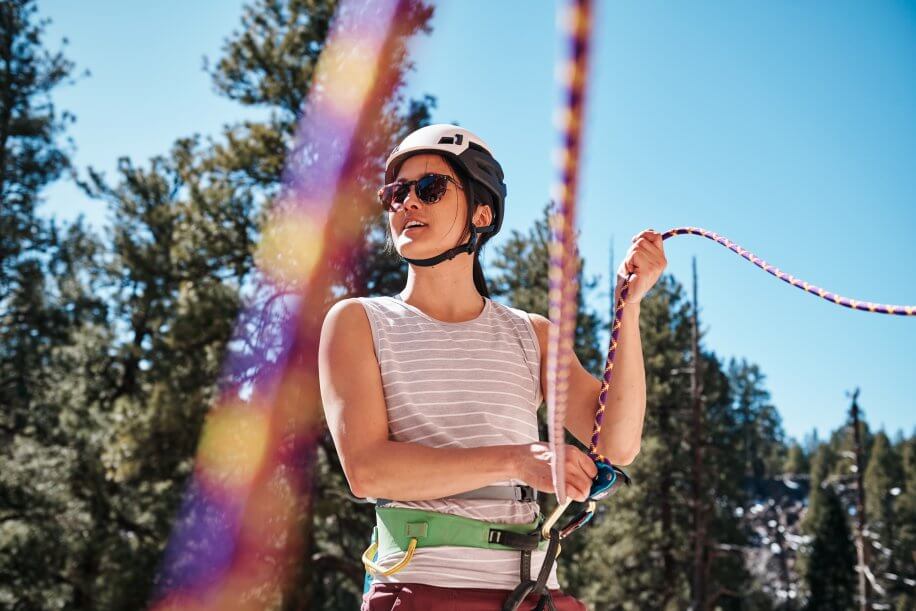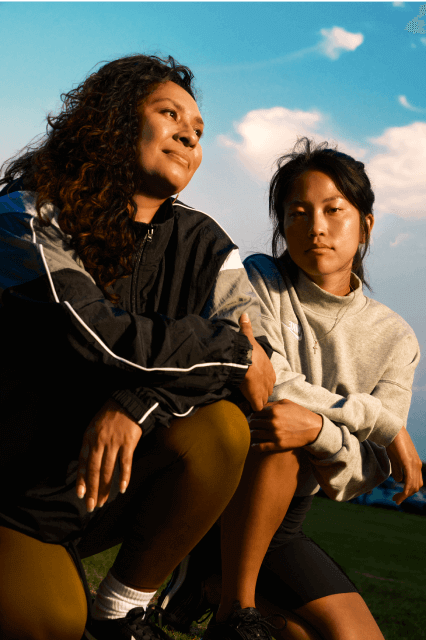Transforming the Outdoors for True Inclusion

How Outdoor Brands Can Design for Diversity and the Future of Our Planet
Spending the majority of her childhood outside hiking, climbing, or skiing, outdoor diversity activist Teresa Baker found a natural connection with nature and being active. But it wasn’t until she took a trip to Yosemite National Park in 2016 as an adult that she looked around and noticed that no one on the hiking trails looked like her.
“When I got home, I reached out to the National Park Service. And I said ‘Hey, this was my experience. I think you guys have a diversity problem.’ And they said, ‘We know, help us fix it.’ And that began this journey of diversity and inclusion in the outdoors,” says Baker.
Her work with the National Park Service quickly broadened into partnering with outdoor brands and retailers to explore the largely erased, fundamental truths behind the history of our outdoors and barriers to what the space should be — a fun and recharging experience for all.
The Need for a Radical Transformation
“Very few things nowadays, sadly, really bring out this sense of feeling alive and allow us to break routines or challenge assumptions. And I think the outdoors can offer all of that,” says Sarah Crockett, CMO of outdoor gear company Backcountry, a signee of Baker’s Outdoor CEO Diversity Pledge.
However, when the outdoors aren’t welcoming or accessible, and topped off with costs from gear to clothing to travel to admission prices, marginalized and low-income communities have the odds stacked against them to get outside and enjoy all that nature has to offer.
Even with BIPOC accounting for almost 40 percent of the US population, close to 70 percent of people who visit national forests and parks are white, according to the National Health Foundation.
A place with so many physical and mental benefits that should be for everyone remains quite an exclusive, white-centric space for the privileged.
Going Beyond the Basics
Outdoor brands need to be part of the solution of creating opportunities and access to a space that has for so long been deeply affected by white supremacy and structural racism — addressing those that have been historically left out of the conversation across race, ethnicity, gender, disabilities, and sizes. And in a time when consumers are aligning their spending with their values more than ever, brands are constantly being challenged to figure out how to meet those values.
Young people are demanding diversity and inclusion on all levels, leading a cultural shift that will only continue to prevail and set the standards for brand imperatives. 81 percent of people under age 30 agree that brands play an essential part in the solutions for challenges facing humanity today — and they’re willing to support, or reject, brands based on how they take action.
“That’s what it’s going to take, is these young people [saying] ‘We’re not going to take it, you’re going to either work with us, or you’re going to be phased out,’” says Baker.
The next generation is advocating for the work that needs to be done to go beyond surface-level actions such as the marketing of diversity, statements, and monetary donations to instead create systemic change. Baker’s In Solidarity Project is directly working toward authentic inclusion, holding brands accountable for advancing BIPOC representation across the industry internally and externally. Since beginning the Outdoor CEO Diversity Pledge in 2018, over 180 brands and organizations have signed on.
“We know that we have a bigger responsibility as an engaged and contributing member of our community to go further and beyond,” says Crockett of Backcountry. “We’re really looking at our own backyard first, and ensuring that our hiring practices, internship programs, and our day to day are structured in a way that promotes diversity within our teams.”

How Brands Can Address the Gap
As the US moves toward becoming a “minority majority” country, people of color will soon become the core customer base and stakeholders for brands.
Brands failing to engage and work with the shifting demographic are behind in the game and will see the effects in their bottom line. Those who aren’t “intentionally engaging communities of color, people from underrepresented communities,” will be phased out “because they refuse, for whatever reason, to work with these communities who have been knocking at their door for years,” says Baker.
“So that’s money off the table for you, because you’re not including us,” she adds.
Another largely untouched inclusion issue and missed opportunity for brands is the lack of size-inclusive gear, isolating 80 percent of women in the US who are a size 16 or above with only 2 percent of clothing currently representing them.
Fortunately, brands like Merrell are leading this work, having collaborated with the Unlikely Hikers organization to design a size-inclusive, genderless trail shoe. And the brand Outdoor Research is launching the industry’s first technical layering system ranging from XS to 3XL and a plus-size collection sized 1X-3X.
Brands are also taking an upfront approach to working with historically underrepresented groups in order to provide them the support necessary to get involved.
The North Face launched their global ‘Reset Normal’ campaign last year, aimed to reset “normal lives” through the power of exploration while making the outdoors more accessible for communities of color. And for 25 years, Burton’s Chill Foundation has been teaching over 2,000 kids each year — majority of which are BIPOC and new immigrants — how to snowboard, skateboard, and surf. Merrell has also partnered with Big Brothers and Big Sisters to provide gear, monetary support, and mentors to get underprivileged young people outdoors.
Protecting the Places We Play
Whether it’s protecting natural habitats, preserving public lands, or fighting climate change, what’s ultimately at stake without everyone coming together to take responsibility for our outside spaces is that “we will no longer have the means to get outdoors and recreate in the way we desire,” says Baker, adding that “while this work is difficult, the payoff is that we can get outdoors together and laugh and joke and have fun.”
Regenerative Brands, those who are aware, additive, and alive in culture, need to constantly be taking the next step to shift community culture and structures, the status quo narrative, storytelling practices and product development to change the course of history.
“I see a future where underrepresented communities are no longer underrepresented, that we are part of the makeup of the outdoor industry, period. And that this DEI work falls by the wayside because it’s happening and there is no longer the need to bring attention to it,” says Baker.
For more perspective from Teresa Baker of the Outdoor CEO Diversity Pledge, Sarah Crockett of Backcountry, and Vincent Stanley of Patagonia, listen to BBMG’s podcast ‘The Future We Want,’ Ep. 9: Everybody Outside.
Looking for more inspiration from outdoor brands? Check out BBMG’s work with The North Face and Burton.
Images courtesy of Backcountry


